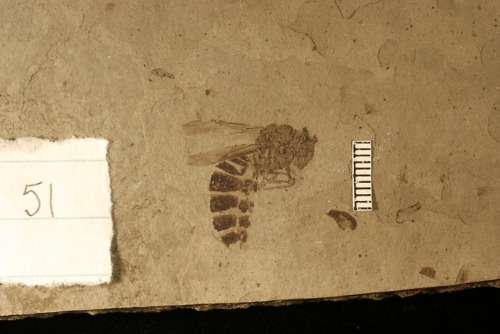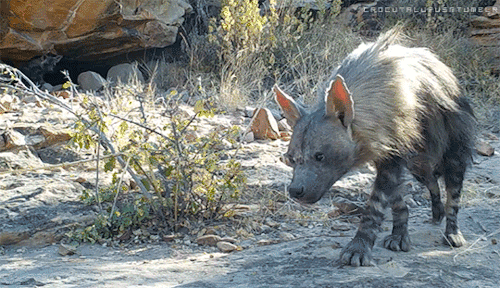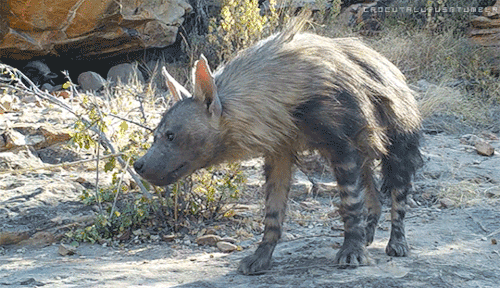Rose And Me
Rose and me

More Posts from Iphleandro-blog and Others




Camping tip

Palaeovespa florissantia This exceptionally preserved 34 million year old wasp was found and identified in what is today Florissant Fossil Beds National Monument in Colorado. This species is a member of the same family of life that today also contains hornets and yellow jackets. The incredible preservation of this insect is one example of the fossils found in Eocene aged lake sediments in this part of Colorado (https://tmblr.co/Zyv2Js296djPx). The area was heavily picked over for fossils prior to establishment of the National Monument and there were even attempts to establish housing developments on the site before it received protection. Today this insect is pictured in the logo of this monument and shots of it can be found around the parking lots at the site. -JBB Image credit: NPS http://bit.ly/2nYZwga References: https://www.revolvy.com/page/Vespinae http://bit.ly/2N9jn7k


x
Funny pets
1-800-ARE-YOU-SLAPPIN




The concept of information as viewed in theoretical physics through statistical mechanics and thermodynamics, and its implications and connections with evolutionary biology. An interesting reading:
How Life (and Death) Spring From Disorder (via WIRED -original story from Quanta Magazine)
Biological systems don’t defy physical laws, of course—but neither do they seem to be predicted by them. In contrast, they are goal-directed: survive and reproduce. We can say that they have a purpose—or what philosophers have traditionally called a teleology—that guides their behavior.
By the same token, physics now lets us predict, starting from the state of the universe a billionth of a second after the Big Bang, what it looks like today. But no one imagines that the appearance of the first primitive cells on Earth led predictably to the human race. Laws do not, it seems, dictate the course of evolution.
–
David Kaplan explains how the law of increasing entropy could drive random bits of matter into the stable, orderly structures of life.
Show

Dog carved into a tree stump.

-
 andron-temporis reblogged this · 3 months ago
andron-temporis reblogged this · 3 months ago -
 anedendarkly liked this · 2 years ago
anedendarkly liked this · 2 years ago -
 sicklysweetnothings reblogged this · 2 years ago
sicklysweetnothings reblogged this · 2 years ago -
 edithesatneebout liked this · 2 years ago
edithesatneebout liked this · 2 years ago -
 a-little-bit-of-lots-of-stuff reblogged this · 3 years ago
a-little-bit-of-lots-of-stuff reblogged this · 3 years ago -
 medblrlexie099 reblogged this · 3 years ago
medblrlexie099 reblogged this · 3 years ago -
 hbshelf liked this · 4 years ago
hbshelf liked this · 4 years ago -
 thistlebox liked this · 4 years ago
thistlebox liked this · 4 years ago -
 girlwithglasses-posts liked this · 4 years ago
girlwithglasses-posts liked this · 4 years ago -
 araiarira liked this · 4 years ago
araiarira liked this · 4 years ago -
 she-whodreams liked this · 4 years ago
she-whodreams liked this · 4 years ago -
 ourelaps liked this · 4 years ago
ourelaps liked this · 4 years ago -
 softyminhee liked this · 4 years ago
softyminhee liked this · 4 years ago -
 mmyriapoda liked this · 4 years ago
mmyriapoda liked this · 4 years ago -
 gladiatorofturtles liked this · 4 years ago
gladiatorofturtles liked this · 4 years ago -
 niceguar liked this · 4 years ago
niceguar liked this · 4 years ago -
 zezlemet reblogged this · 4 years ago
zezlemet reblogged this · 4 years ago -
 leonard-cohen-the-second reblogged this · 4 years ago
leonard-cohen-the-second reblogged this · 4 years ago -
 leonard-cohen-the-second liked this · 4 years ago
leonard-cohen-the-second liked this · 4 years ago -
 element-of-air reblogged this · 4 years ago
element-of-air reblogged this · 4 years ago -
 element-of-air reblogged this · 4 years ago
element-of-air reblogged this · 4 years ago -
 glorious-absolution liked this · 4 years ago
glorious-absolution liked this · 4 years ago -
 lalahart402 liked this · 4 years ago
lalahart402 liked this · 4 years ago -
 itsineden liked this · 4 years ago
itsineden liked this · 4 years ago -
 everythingaboutbiotech reblogged this · 4 years ago
everythingaboutbiotech reblogged this · 4 years ago -
 strberrysmoon liked this · 4 years ago
strberrysmoon liked this · 4 years ago -
 wanukilppari liked this · 4 years ago
wanukilppari liked this · 4 years ago -
 compendiaadhitiensis reblogged this · 4 years ago
compendiaadhitiensis reblogged this · 4 years ago -
 contemplativewomaniya liked this · 4 years ago
contemplativewomaniya liked this · 4 years ago -
 ooooooooooooooops liked this · 5 years ago
ooooooooooooooops liked this · 5 years ago -
 monarch-of-stars liked this · 5 years ago
monarch-of-stars liked this · 5 years ago -
 prinsesaniya liked this · 5 years ago
prinsesaniya liked this · 5 years ago -
 konterpig liked this · 5 years ago
konterpig liked this · 5 years ago -
 thewickdsleeps liked this · 5 years ago
thewickdsleeps liked this · 5 years ago -
 honeybunbunstudies reblogged this · 5 years ago
honeybunbunstudies reblogged this · 5 years ago -
 sekushi0range reblogged this · 5 years ago
sekushi0range reblogged this · 5 years ago -
 filmingera liked this · 5 years ago
filmingera liked this · 5 years ago -
 im-idle liked this · 5 years ago
im-idle liked this · 5 years ago -
 ionicmess liked this · 5 years ago
ionicmess liked this · 5 years ago -
 hiacynty liked this · 5 years ago
hiacynty liked this · 5 years ago -
 day-knight liked this · 5 years ago
day-knight liked this · 5 years ago -
 newgoalsset liked this · 5 years ago
newgoalsset liked this · 5 years ago -
 isaacgrayson liked this · 5 years ago
isaacgrayson liked this · 5 years ago